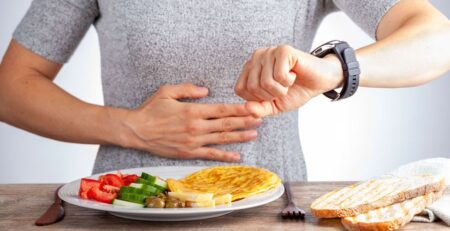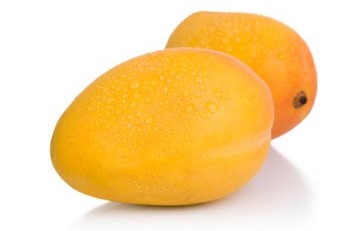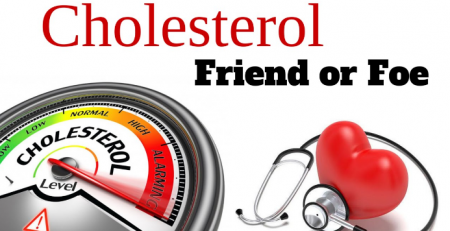Dietary Fibre Is Essential To Our Health!
Dietary Fibre Protects Us From Diabetes, Heart Disease, Strokes And Colon Cancer!
Dietary Fibre, commonly known as roughage, is an essential component of our food.
It is one of the two main types of complex carbohydrates, the other being the starches.
It includes all the parts of plant foods that we cannot digest or absorb. It passes through our digestive tract and is eliminated from our body more or less unchanged. The word fibre is really a bit of a misnomer in the sense that not all the plant parts that are included in this food group are fibrous.
Most of us know fibre as the element of our food that prevents constipation. But there are other vital health benefits of fibre for us.
Chemically, dietary fibre consists of non-starch polysaccharides such as arabinoxilans, cellulose, and many other plant components such as resistant starch, resistant dextrins, inulin, lignin, waxes, chitins, pectins, beta-glucans, and oligosaccharides.
Fruits, vegetables, whole grain cereals, pulses and legumes, nuts and seeds are the major sources of fibre in our food. Thus our normal Indian food, with major emphasis on vegetarian food, is naturally rich in dietary fibre.
Whole grain cereals have around 10 to 15 grams of fibre per 100 gm, pulses around 7 to 15 gram, fruits like raspberries, blackberries, and strawberries around 5-8 grams, and apples, pears, and bananas around 2-3 grams.
It is the high fat, high protein egg and meat based Western food that is deficient in fibre.
Dietary fibre is broadly classified as soluble and insoluble fibre.
Soluble fibre dissolves in water, forming a gel like substance that absorbs cholesterol and sugars and clears them out of our bowels, reducing their absorption in our blood stream, thus helping lower blood cholesterol, especially LDL, the bad cholesterol and sugar. Thus it helps lower the risk of diabetes, heart disease and strokes.
Soluble fibre sources are oats, pulses and legumes, apples, citrus fruits, carrots, barley and psyllium (isabgol).
Insoluble fibre obviously does not dissolve in water. It absorbs water, adds bulk, softens stools and speeds up it’s transit through the bowels and relieves constipation. It regulates bowel movement, promotes growth of useful bacteria in the bowels, regulates the pH in the bowels, helps eliminate toxins from the bowels and helps prevent colitis, haemorrhoids and colon cancer.
Insoluble fibre sources are all types of fruits and vegetables, especially leafy vegetables, potatoes, beans, nuts, whole grain cereals and bran.
The major sources of fibre in legumes per 100 gm are:
White beans (total 17.7, insoluble 13.4, soluble 4.3 gm), soy (total 15 gm), lentils (total 11.4, insoluble 10.3, soluble 1.1 gm).
The major sources of fibre in cereals per 100 gm are:
Barley (total 17.3 gm), corn (total 13.4 gm) oats (total 10.3, insoluble 6.5, soluble 3.8 gm), wheat (total 12.6, insoluble 10.2, soluble 2.3 gm).
The major sources of fibre in vegetables per 100 gm are:
Bitter gourd (total 16.6, insoluble 13.5, soluble 3.1 gm), beetroot (total 7.8, insoluble 5.4, soluble 2.4 gm), brinjal (total 6.6, insoluble 5.3, soluble 4.3 gm), fenugreek leaves (total 4.9, insoluble 4.2, soluble 0.7 gm), ladyfinger (total 4.4, insoluble 3.0, soluble 1.3 gm).
In fact most plant foods have both kind of fibre in varying amounts, a little more insoluble than soluble fibre.
Most fibre rich foods are also rich in vitamins and minerals and low in fats and calories. Thus a fibre rich diet also helps us get and stay slim and healthy.
Women up to the age of 50 need about 25 gm, those above 50, 21 gm and men need between 31 to 38 gm of fibre daily.
If you eat balanced nutrition, including a combination of whole grain cereals, pulses and legumes and fresh vegetables and fruits, you don’t have to worry about getting adequate fibre. To derive the full benefits of fibre, it is essential to drink ample water.
Too much fibre can cause gas formation and colic in abdomen. It can also cause constipation if you don’t drink enough water. So don’t overdo fibre and make sure you drink ample water.
Read the article ‘Basics Of Nutrition‘ on this site.

















Leave a Reply